Phil Craft is a beekeeper and former bee inspector in Kentucky, USA. He was an author for Bee Culture magazine for many years, and continues to share his knowledge through presentations to beekeepers at local and national events. Phil is passionate about beekeeping, he continues to maintain his 20 beehives, and works as a technical advisor in the United States for Véto-pharma.
Spring hive checks are important in order to assess the condition of our hives so that we can take steps promptly if problems exist. However, as I sit in my office here in Kentucky, and watch the snow fall, I am reminded that it is still winter out there. Honey bees in my hives tightened their clusters last fall when temperatures dropped below about 10°C, and early manipulation will disturb the cluster and may cause damage to the colony. Even when the days get warmer, nighttime temperatures can easily drop into the 30s or lower. However, like you, I get very curious about just what is going on inside my hives this time of year. Though it is now too cold to open my hives, warmer weather will return.

As the days warm, in early spring, or even late winter, and I begin thinking about looking in my hives to see how they have fared though the winter, I consider exactly what I hope to accomplish. If I were to discover a problem such as a queen-less hive, I would not have a replacement queen available. If I found a weak colony with only a few frames of bees, I couldn’t reinforce it by adding frames of brood – I don’t have them to move – and combining hives would require more manipulation than I would ever consider at this time of year. That leaves me with two clear early in the year goals: assessing cluster size and checking food reserves. Both may be managed with as little disruption to the colony cluster as possible, i.e. without removing frames. I do this by what I call “popping lids”.
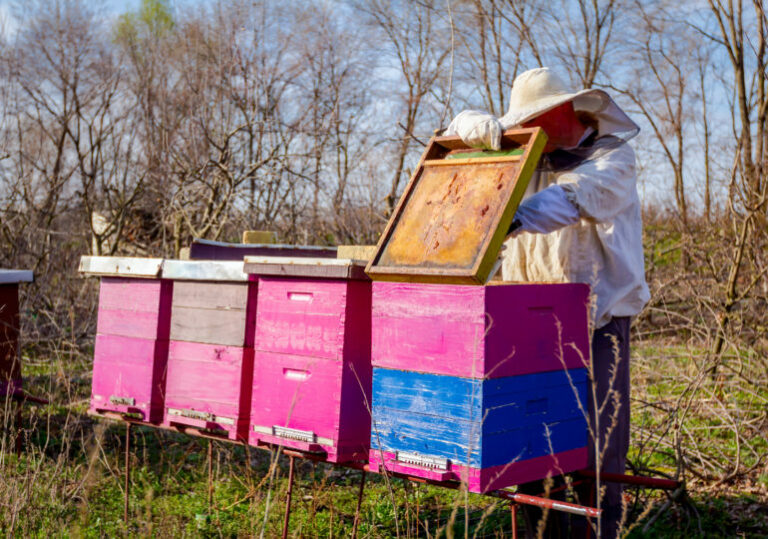
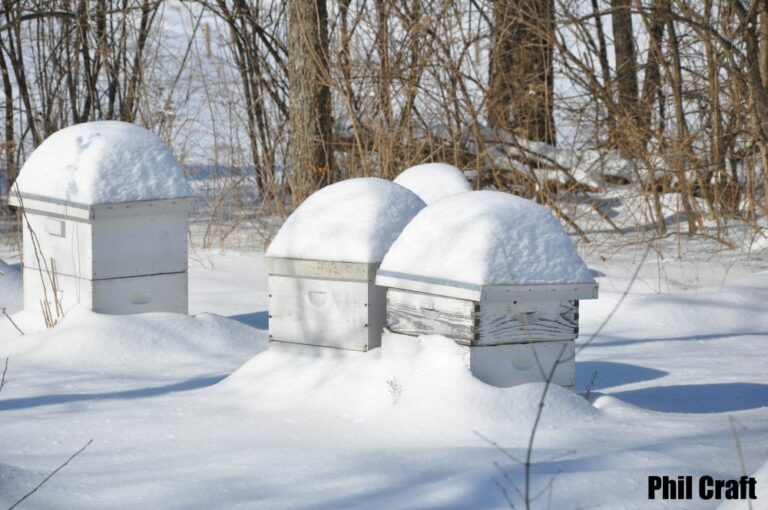
In the early spring, or even warmer days in late winter, on a sunny day, when temperatures reach the 50s and 60s°F, I will conduct a quick check on my colonies. I remove the lid and outer cover, and by looking down between the frames and taking note of the number which appear to be covered with bees, I can estimate the population in the top box. I then lift the top brood box off. Its weight will give me an idea of the amount of food which the colony has to sustain it through what’s left of the cold weather. A heavy box reassures me that the stores are ample. If it lifts off with little effort, I know that I need to do some emergency supplemental feeding. Typically, by mid-winter most of the food stores in the bottom box have been consumed, and the bees are very dependent on what remains in the top. While I have the top box off the hive, I look in the bottom to get an idea of how many bees are there. By mid-winter the cluster has most often moved entirely into the top box, so I am not concerned if I don’t see many in the bottom. Having gained all the useful information I can without moving frames, I reassemble the hive.
The purpose of such a cursory inspection, aside from satisfying curiosity, is to assess conditions that you can do something about. While it’s too late to help a weak hive, lots of bees in both the top and bottom boxes is an indication that a colony will build up rapidly come spring. That can mean bees in the trees (swarms) if the beekeeper is not prepared. On the strength of an early lid-popping hive check, I may place an order for queens for making early splits and nucs. I will also make sure that I have enough woodenware, including frames with wax or foundation, at hand. A lack of food stores can be remedied immediately. If the upper box is light, I add a winter sugar patty purchased from a beekeeping supplier.
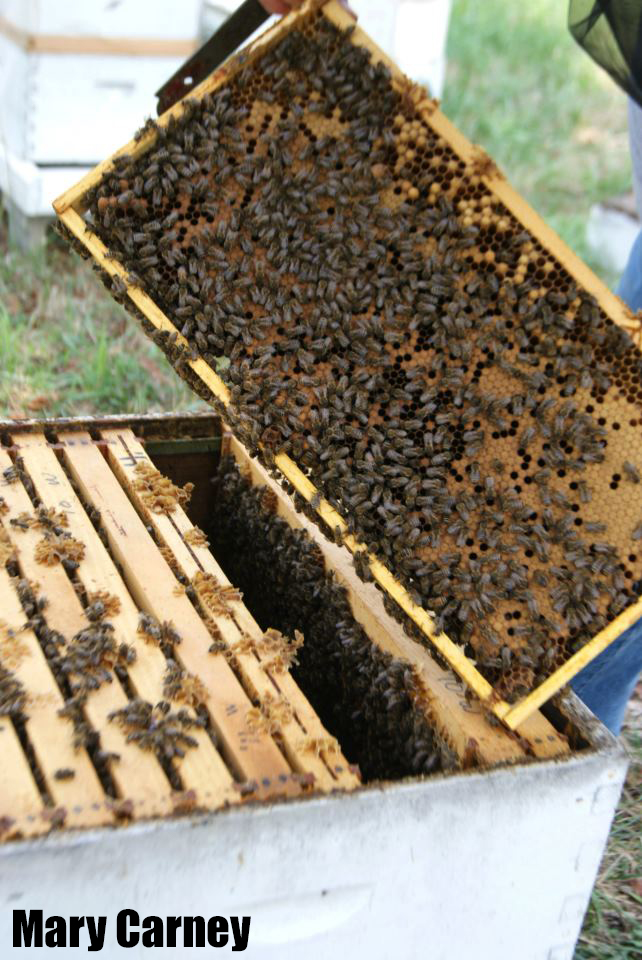
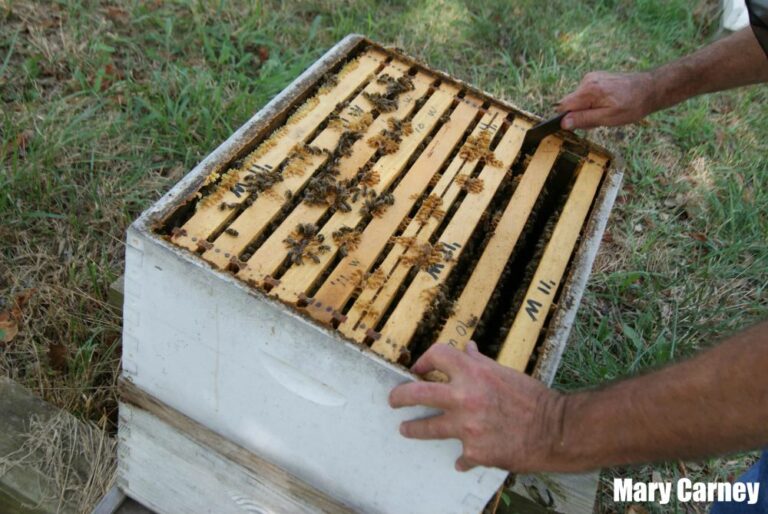
Winter patties are different from “protein patties or pollen patty substitutes” which are feed to colonies later in the year. Winter patties contain very little, or no protein, and are all, or almost all sugar, and serve the same function as stored honey, Feeding pollen, or protein, too early in the season will encourage brood rearing. Brood rearing too early, especially in a hive low on food stores will invite starvation, and is counterproductive to emergency feeding. It can also result in early swarming, before the beekeeper has an opportunity to prevent it. Winter patties are placed directly over the frames of the top brood body. Bee candy, or fondant, is another option. Bee candy is a super saturated sugar syrup, produced by boiling, which forms a solid at room temperature. Cooks will be familiar with fondant used for icing and cake decorations. Bee candy is the same thing without the addition of food coloring or flavoring. It can be laid on the top bars of the hive, or poured onto a special inner cover while warm and placed over the top brood box after cooling. Inside the hive, the moisture produced by the cluster softens the candy making it easier for the bees to consume. Even granulated sugar sprinkled over the inner cover will be ingested by the bees and provide some emergency calories. The best winter food is the one which you have on hand and can get into the hive before the weather gets too cold to reopen it.
Reserve serious inspections for the onset of more consistent spring like weather, which can occur in my region as early as mid-February, but more typically in March. In some years, here in the upper south of the U.S., I can’t really get into my hives until April. The extended weather forecast, and not the calendar, must be your guide. Experienced beekeepers develop a feel for when conditions are right; beginners tend to prefer specific rules. For them, this is what I suggest. Look for periods of several days with highs in the 50’s and 60’s, and lows in the high 40’s or 50’s. A sunny day with temperatures in the 50’s will do to open hives, but if conditions are cloudy or windy, wait until the thermometer reads at least 60. There is no point in pulling frames until it’s warm enough to manage any problems you may find, and disturbing the cluster too early can be harmful. Real spring weather, not the odd warm day, is the time to remove frames, examine brood, verify that the queen is present, and begin springtime beekeeping. Definitely postpone any manipulations involving the rearrangement of frames or hive bodies until the threat of freezing temperatures is past.
As temperatures rise constantly into the 10-15ᶛC range, it is safe to open your hives and start to remove frames, you should be looking for brood, food, bees, and disease. Varroa mites continue to be the cause of most colony losses. Even if you treated last fall, an early spring check is vital to knowing the varroa infestation level is in your colonies. Veto-pharma makes a simple an easy to use tool which you can use to monitor your hives for varroa, the Varroa EasyCheck. For more information on using this tool, and for varroa mite monitoring information you can visit Varroa EasyCheck webpage.
Once spring has begun to arrive, and the bees have been carrying in pollen, your colonies should be rearing plenty of brood. Check for both larvae (uncapped brood) and pupae (capped brood). Your hives are not likely to be completely full of bees this early in the spring, and the number of bees is a limiting factor in the amount of brood a colony can rear at one time. What brood there is will be located near the center of the cluster where the bees can keep it warm. If you are seeing a number of frames of brood – say four or more – the spring buildup in your hives is well underway. I suggest that you make notes for each hive, recording the number of frames on which you see brood. This information will aid you, as spring progresses, in judging how each hive is growing.
As you move into spring you should also conduct more extensive checks for food stores, both honey and pollen. At that time of year, I would like to see at least several full, deep frames of honey left over from last fall’s stores, as well as fresh nectar. That should be enough to get the colonies through any cold spells that may still occur, or through extended rainy periods when foragers cannot get out of the hive. Look for fresh nectar (uncapped honey), especially near young brood. You can determine whether the hive has sufficient food by actually counting the frames of stored, capped honey (from last fall) or from the weight of the top deeps (Do they feel heavy?) as you lift them to check the bottom boxes. Again, make a written note of the hive’s food stores, especially for those that you think may be low and in need of feeding. If you are seeing fresh nectar in the cells and several frames of stored honey, feeding is not necessary. In addition to honey and nectar, you should see cells containing fresh pollen. Any pollen left over from last fall is a bonus, providing the colony with a reserve. You can distinguish between them because fresh pollen has a bright color, and will be found adjacent to cells containing fresh nectar near where brood is being reared on the same frames. Older pollen is duller, and may be found on frames outside the brood area. Pollen is a very important part of the bees’ diet when rearing larvae, so I always look for stores of it, along with honey reserves, during spring inspections.
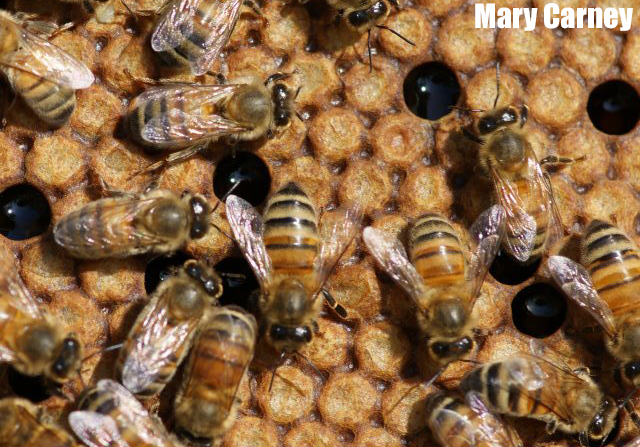
The third thing to check for, though the first that you will notice, is bees. Note the number of frames covered with bees to get an idea of the colony’s strength. A hive emerging from winter with even 7 or 8 covered frames is in good condition. Here in Kentucky, I hope for full hives by April when the nectar flow is on and the bees begin serious honey production. Which tells me that it is time to add honey supers. The time table by calendar varies regionally – beekeepers further north do not need full hives until May or later; hives in the deeper south may already be full of bees – but the progression is the same in for parts of the world which experience winter. The typical winter procedure of the colony’s cluster is to consume all the honey in the bottom box during cold weather, then move up into the top prior to early spring. In your first inspection, you will very likely see all of the bees, brood, eggs, and other activity in the top brood boxes in your hives. The bottom boxes may be mostly empty, with some bees, but no brood or honey – yet. That is normal for early spring, and is not necessarily a negative. It gives the colonies room to expand during the next month, lessens the chances of early swarming (hopefully), and allows the colonies to begin reaching full strength later in the spring as the nectar flow increases. I suggest re-checking your hives again in a couple of weeks, if the weather cooperates. By then, you should expect to see the brood area expanding into the bottom boxes.
A tip, especially if you are a new beekeeper: when I remove frames in the early spring, I am careful to put them back in the same order in which I remove them. I don’t do this throughout the year. Later, in the spring I will rearrange or remove frames (replacing them with others) to manage brood production, to TRY to prevent swarming, or for other management reasons. But now, with many cold nights still to come, I’m very careful not to disturb the natural clustering of the colonies, which is concentrated around brood and adjacent frames of food.
You may have noticed that, in my suggestions of things to check for, I did not mention looking for queens. The reason is that there is no need to. The presence of eggs or brood (especially that of larvae) tells us that queens are active in our hives. There is no need, even, to look for eggs in these first spring inspections. I sometimes do so, but it is not really necessary, and it takes longer. I am satisfied that my observations of larvae and pupae tell me what I need to know about the condition of the hives. If brood or eggs are not present in a particular hive, that is the time to search for the queen.
In addition to checking for brood, food, and bees, you should be looking for any signs of disease, pests, or parasites. As you mentioned, a spring check for varroa is most important. Beyond that, it is difficult for new beekeepers to diagnose these problems, and they are, in any case, subjects for additional articles. The best thing you can do is to learn what normal looks like, and keep an eye out for the abnormal. If you see something which doesn’t look quite right, ask for help from another beekeeper or from your local bee inspector.
Join the Véto-pharma community and receive our quarterly newsletter as well as our occasional beekeeping news. You can unsubscribe at any time if our content does not suit you, and your data will never be transferred to a third party!
© 2019-2025, Véto-pharma. All rights reserved